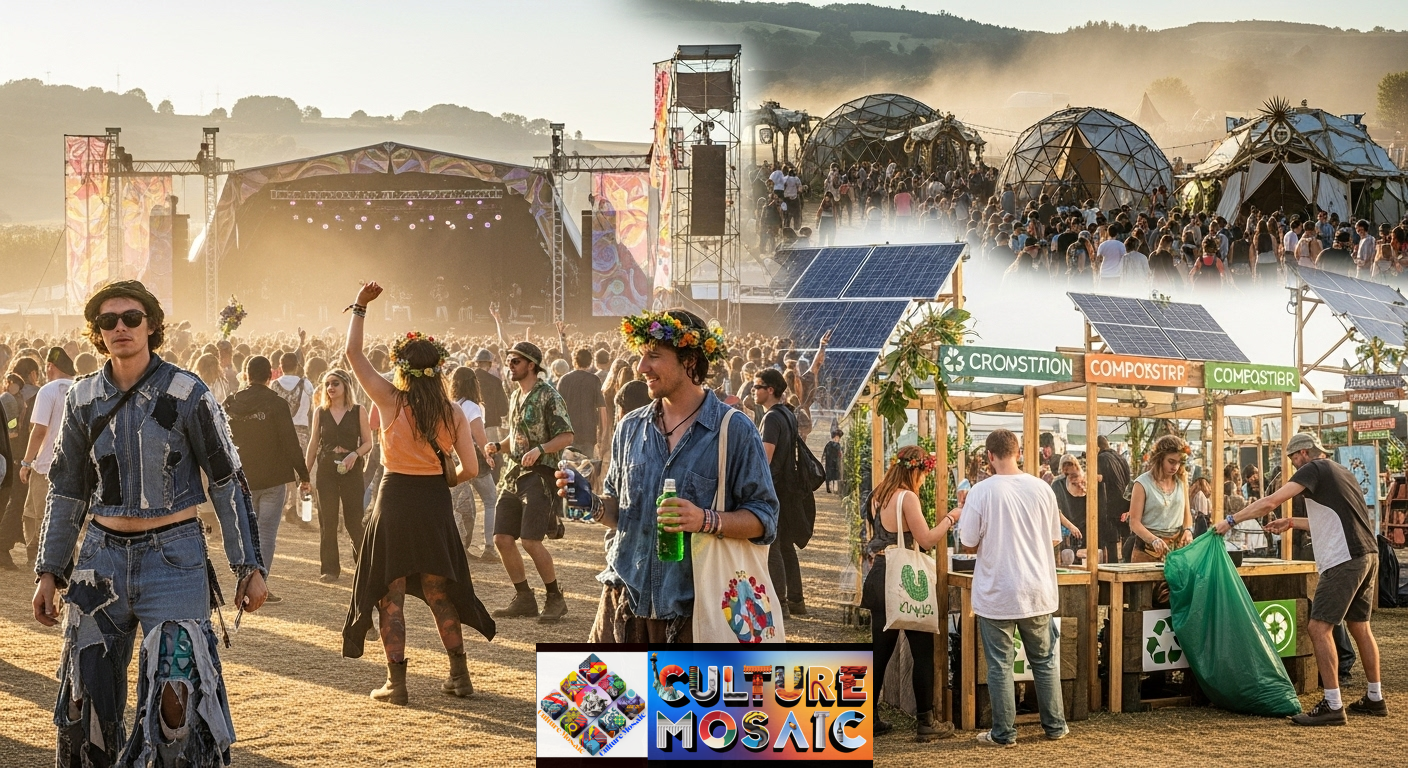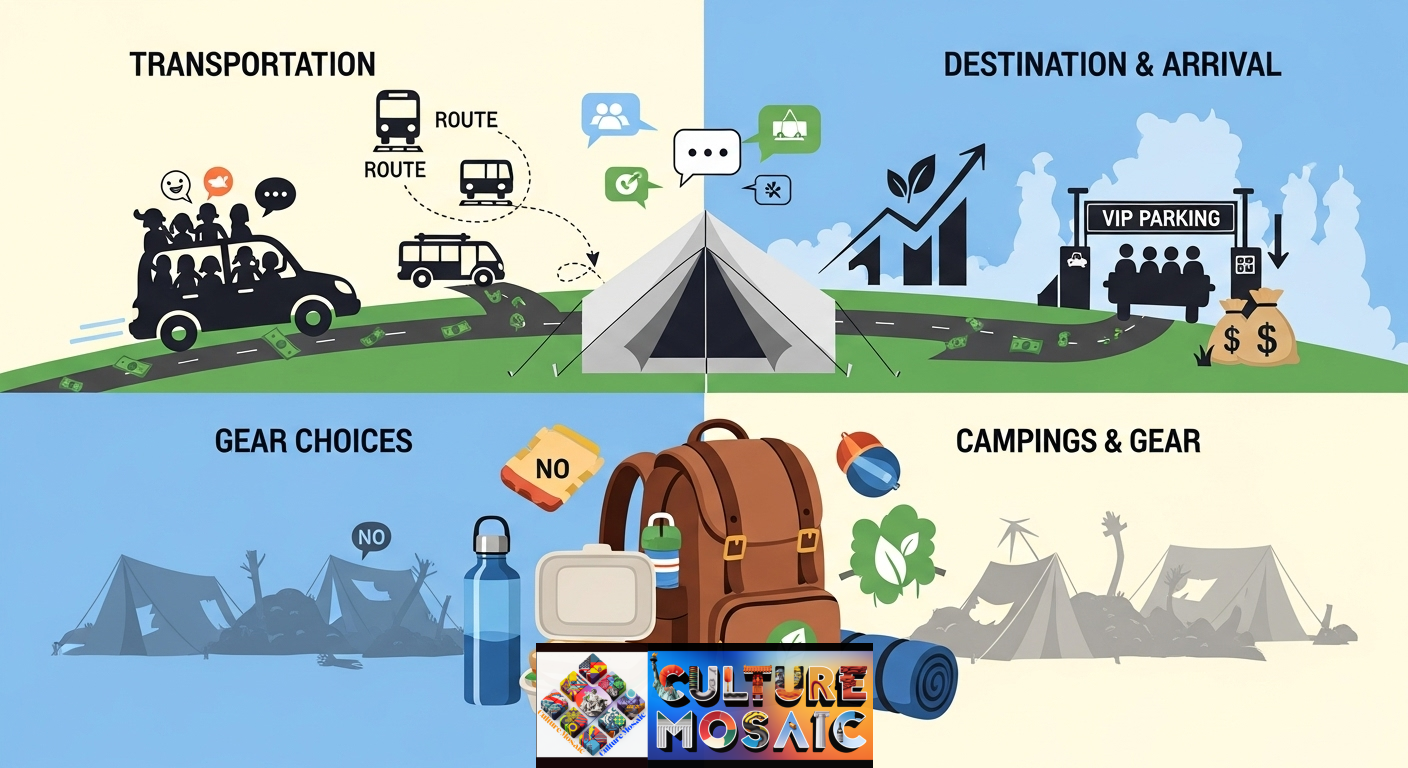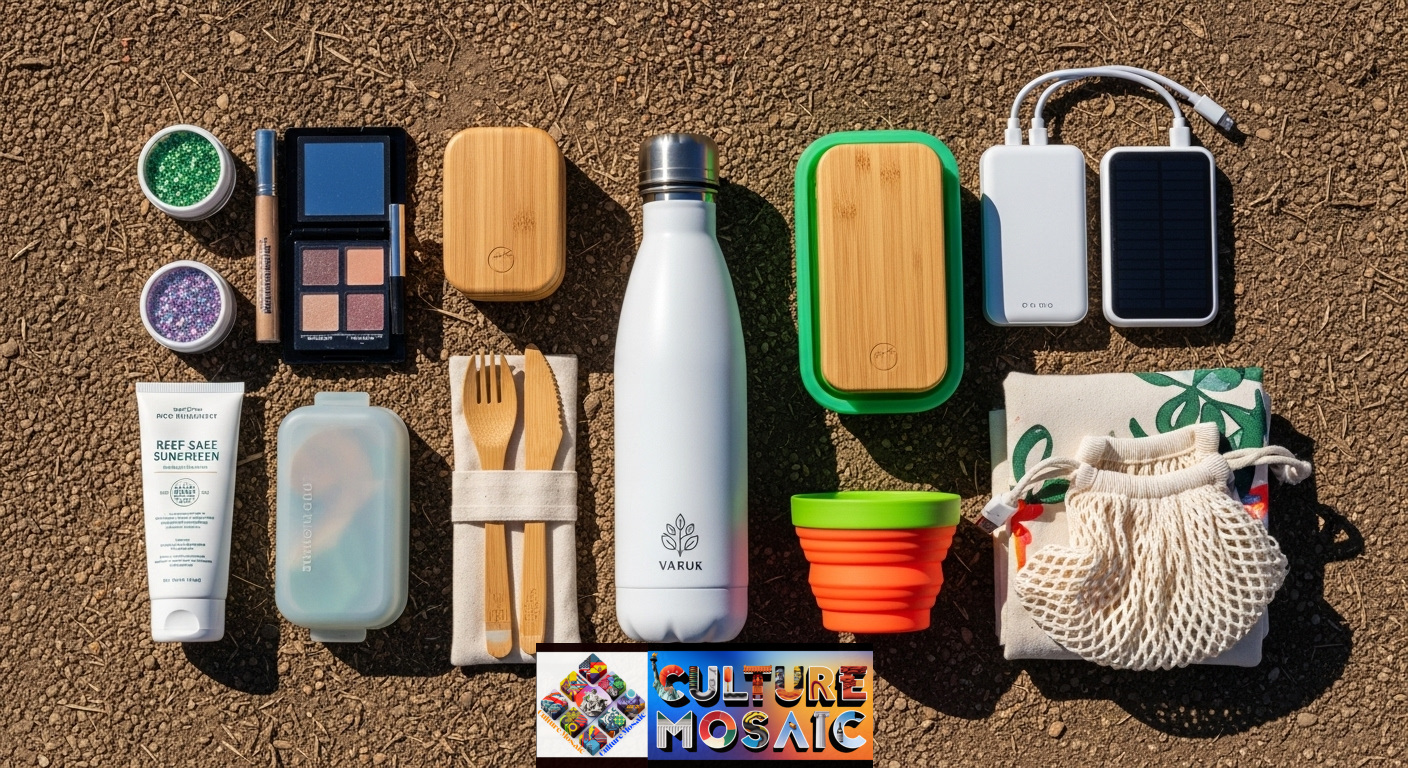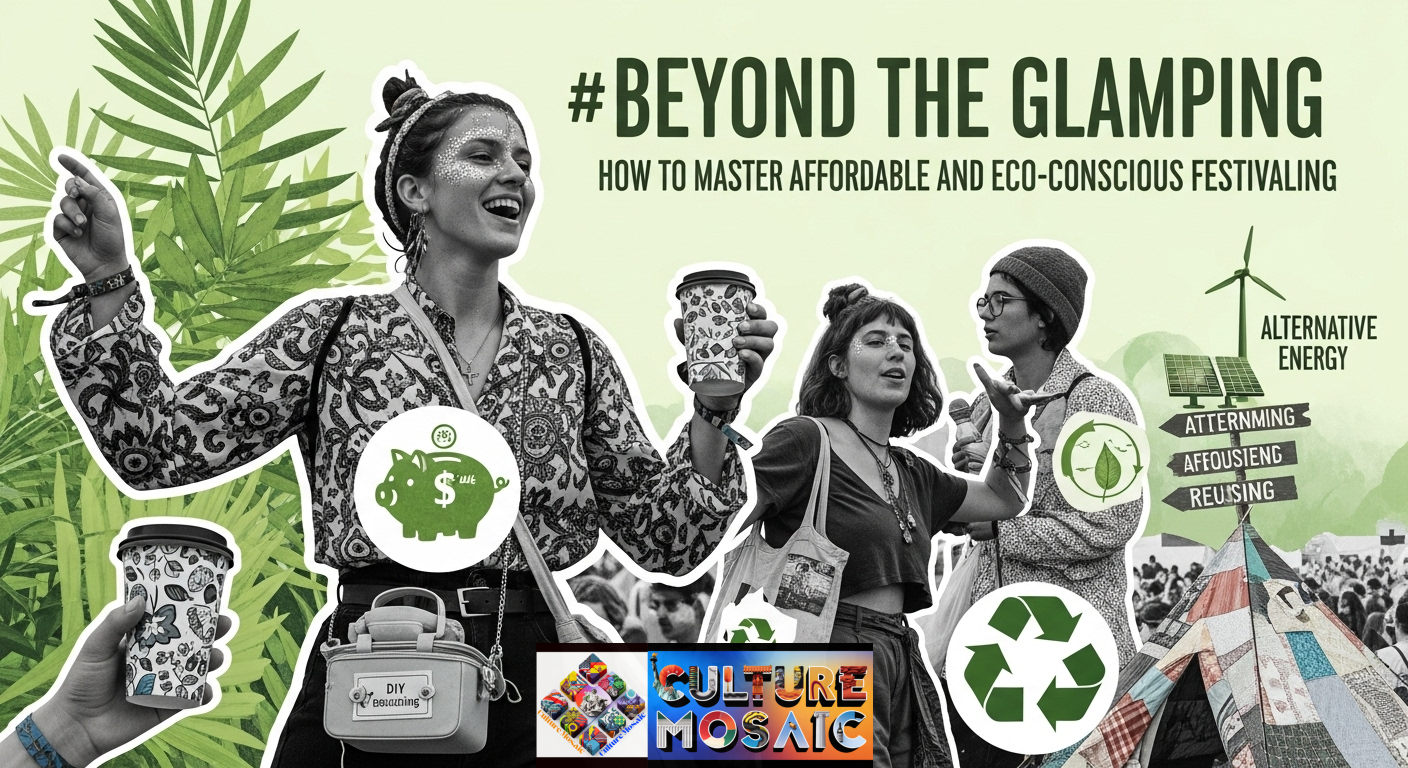Festival season used to mean grabbing your friends, throwing caution to the wind, and immersing yourself in music, art, and community. But let’s be real—attending festivals in 2025 feels different. Ticket prices have skyrocketed, on-site vendors charge premium prices for necessities, and the environmental toll of these massive gatherings is harder to ignore. The good news? A growing movement toward eco-conscious festivaling is proving that you don’t have to choose between having an incredible experience and being kind to your wallet and the planet.
The Financial Reality Check: Why We’re All Feeling the Pinch
If you’ve noticed your festival budget stretching thinner each year, you’re not imagining things. Major US festivals like Coachella and Bonnaroo have seen ticket prices climb 40-60% over the past five years. What once cost $400 for a weekend pass now approaches $600 or more, and that’s before factoring in travel, camping fees, food, and merchandise.
This pricing pressure isn’t just affecting attendees—it’s changing behavior. More festival-goers are seeking out smaller, regional events or finding creative ways to participate in larger festivals without breaking the bank. The economic reality has inadvertently sparked something positive: a more thoughtful approach to festival attendance that prioritizes value, authenticity, and sustainability over conspicuous consumption.
The Rise of Eco-Conscious Festivaling: A Cultural Shift

Eco-conscious festivaling represents more than just bringing your own water bottle. It’s a fundamental rethinking of how we engage with these temporary communities. The statistics are sobering—a typical large-scale festival generates hundreds of tons of waste, much of it single-use plastics, abandoned camping gear, and discarded food. But change is happening.
Progressive festivals across the US are building sustainability into their DNA. Events like Lightning in a Bottle in California and Pickathon in Oregon have pioneered practices like banning single-use plastics, implementing comprehensive recycling and composting programs, and powering stages with solar energy. These festivals prove that eco-conscious festivaling doesn’t mean sacrificing production quality or attendee experience—in fact, many participants report feeling more connected to the event’s values and community.
The cultural shift goes deeper than festival operations. Attendees themselves are embracing sustainable practices as part of their festival identity. Showing up with thrifted outfits, reusable gear, and a commitment to leaving no trace has become a point of pride rather than a limitation. This mindset transforms eco-conscious festivaling from an obligation into an opportunity for creativity and authentic self-expression.
Sustainable Style on a Dime: Mastering the Thrifted Look

Festival fashion has always been about standing out, but the era of fast fashion hauls specifically for one weekend is fading. Enter the thrifted festival aesthetic—unique, affordable, and infinitely more interesting than anything you’ll find in a corporate store’s “festival collection.”
Thrift stores, vintage shops, and online resale platforms like Depop, Poshmark, and ThredUp have become treasure troves for festival-goers practicing eco-conscious festivaling. The key is starting your search early and thinking creatively. That oversized men’s shirt from the ’70s? Perfect as a dress with a belt. Vintage denim cutoffs? Timeless. A sequined top from the ’90s? Absolutely festival-ready.
The financial case is compelling, too. You can assemble a complete festival outfit for $30-50 by shopping secondhand, compared to $150+ for new items. Plus, you’re guaranteed not to show up wearing the same thing as twenty other people.
Accessories complete the look and offer even more opportunities for sustainable choices. Upcycled jewelry made from reclaimed materials, second-hand bags and backpacks, and DIY projects using fabric scraps or old clothing create one-of-a-kind pieces. Many festival-goers have embraced visible mending and customization—adding patches, embroidery, or fabric paint to existing pieces—turning eco-conscious festivaling into a creative outlet that extends beyond the event itself.
Smart Camping & Travel: Cutting Your Carbon Footprint and Your Costs

Transportation typically represents both the largest expense and environmental impact of festival attendance. Eco-conscious festivaling requires rethinking how you get there and what you bring.
Carpooling is the obvious starting point, but it requires coordination. Create or join carpooling groups through festival forums, social media, or apps designed to connect attendees. Splitting gas costs four ways instead of two makes a measurable difference, and many festivals offer preferred parking for full vehicles. If the festival is accessible by public transit or offers official shuttle services, these options typically cost less than parking fees while dramatically reducing your carbon footprint.
For camping gear, the “buy new for every festival” mentality is both expensive and wasteful. The abandoned tent has become a symbol of festival waste—thousands left behind each year because they’re cheaper to abandon than to pack. Resist this mindset by investing in quality gear that lasts years, not one weekend. Better yet, coordinate with your group to share tents, coolers, and cooking equipment. Rental services for camping gear are increasingly available in major festival markets, offering another alternative to purchasing items you’ll use once or twice annually.
Reusable items should be non-negotiable. A durable metal water bottle pays for itself within one festival by eliminating costly bottled water purchases. Reusable food containers mean you can pack snacks and meals, avoiding marked-up vendor prices. These choices align the financial and environmental benefits of eco-conscious festivaling perfectly.
Your Zero-Waste Survival Kit: What to Pack for the Eco-Conscious Festivaling Veteran

Experienced practitioners of eco-conscious festivaling arrive prepared with a curated kit of sustainable essentials. This isn’t about carrying everything you own—it’s about thoughtful selection of items that serve multiple purposes and minimize waste.
Essential Items:
- Reusable water bottle and collapsible cup: Hydration without single-use plastics
- Reusable utensils and food containers: For meals and snacks throughout the weekend
- Biodegradable glitter and makeup: Festival sparkle without microplastic pollution
- Reef-safe sunscreen: Protects your skin without harming ecosystems
- Portable battery pack and solar charger: Keep devices powered sustainably
- Reusable bags: For carrying purchases and collecting trash
- Microfiber towel: Quick-drying and compact
- Bar soap and shampoo: Eliminates plastic bottles and TSA liquid limits
- Cloth napkins or bandanas: Multi-purpose for cleaning, shade, and fashion
The zero-waste approach extends to end-of-festival behavior. Pack out everything you brought in, including items that could theoretically be left (like damaged gear). Participate in festival cleanup efforts if offered. The goal of eco-conscious festivaling isn’t perfection—it’s meaningful progress toward reducing collective impact.
Making Eco-Conscious Festivaling Your Default
The transition to eco-conscious festivaling doesn’t require dramatic sacrifice or significant expense. In fact, most attendees discover that sustainable practices actually enhance their festival experience while saving money. The thrifted outfit becomes a conversation starter. The shared camping setup strengthens friendships. The commitment to leaving no trace creates a sense of purpose beyond just being entertained.
As festivals continue evolving to meet attendee expectations for sustainability, your choices as a participant send powerful signals. Supporting festivals that prioritize environmental practices, choosing sustainable vendors, and visibly practicing eco-conscious festivaling encourage broader cultural change. The movement grows when others see it’s not only possible but preferable.
Festival culture has always been about community, creativity, and connection. Eco-conscious festivaling simply extends those values to include our relationship with the environment and our financial well-being. It’s a natural evolution—and one that ensures festival culture can thrive for generations to come.
Frequently Asked Questions About Eco-Conscious Festivaling
Q: Is eco-conscious festivaling more expensive than traditional festival attendance?
A: Actually, eco-conscious festivaling typically costs less. While some sustainable items require upfront investment (like quality reusable bottles), these pay for themselves quickly. Thrifted clothing, carpooling, shared gear, and bringing your own food and water all reduce expenses significantly compared to buying new items and relying on expensive on-site vendors.
Q: What should I do with camping gear I can’t reuse or donate?
A: Many festivals now partner with organizations that collect and repurpose used camping equipment. Check your festival’s website for gear donation programs. Alternatively, contact local homeless shelters, disaster relief organizations, or refugee resettlement agencies—they often need camping supplies. As a last resort, research proper disposal methods for your area rather than abandoning items at the festival site.
Q: How can I find festivals that prioritize sustainability?
A: Look for festivals that prominently feature their environmental initiatives on their websites—true commitment is visible, not hidden. Certifications like A Greener Festival or specific sustainability awards indicate serious efforts. Smaller, regional festivals often have stronger environmental practices than massive commercial events. Online festival communities and forums are excellent resources for discovering eco-conscious events.
Q: What’s the single most impactful change I can make for eco-conscious festivaling?
A: Changing how you travel to the festival has the biggest environmental impact. Transportation accounts for the majority of a festival’s carbon footprint. Carpooling, using shuttle services, or taking public transit when available makes a more significant difference than any other single choice. If you can convince three friends to ride together instead of driving separately, you’ve made a substantial impact.
Q: Can I still have fun and look good while practicing eco-conscious festivaling?
A: Absolutely—many would argue that eco-conscious festivaling makes the experience better. Thrifted and vintage fashion is more unique and interesting than mass-produced festival wear. The creative challenge of sustainable packing and planning often leads to more memorable experiences. Plus, there’s genuine satisfaction in knowing your weekend of fun didn’t come at the expense of the environment or your financial stability. The eco-conscious approach enhances rather than limits festival enjoyment.

